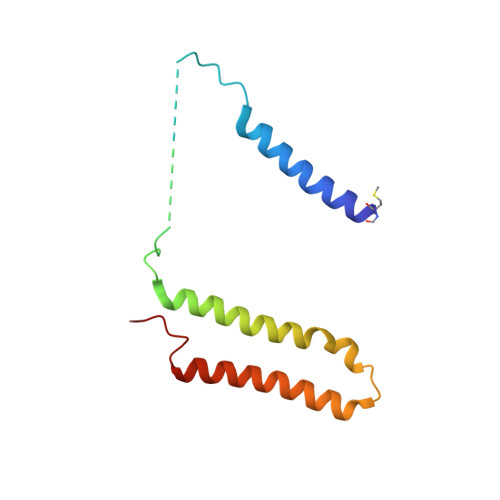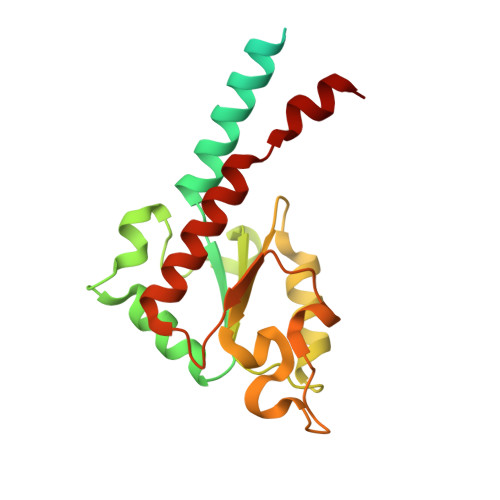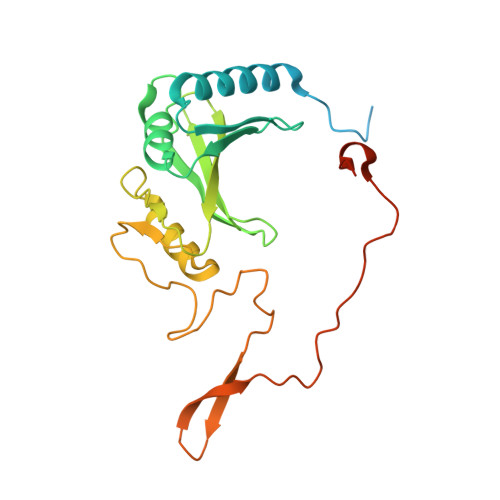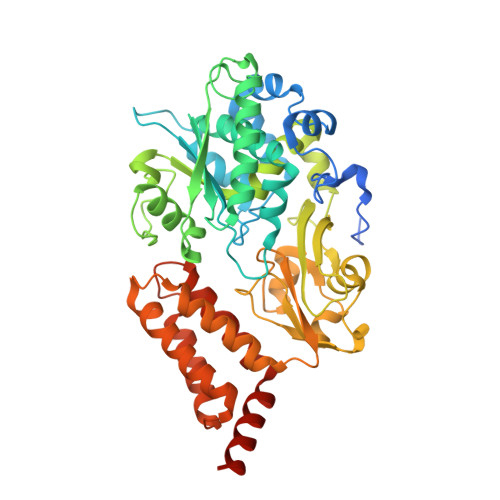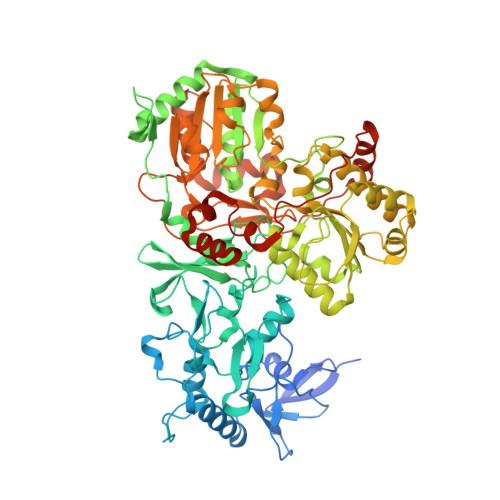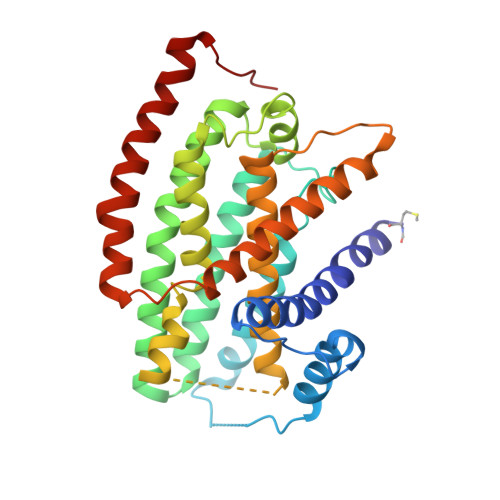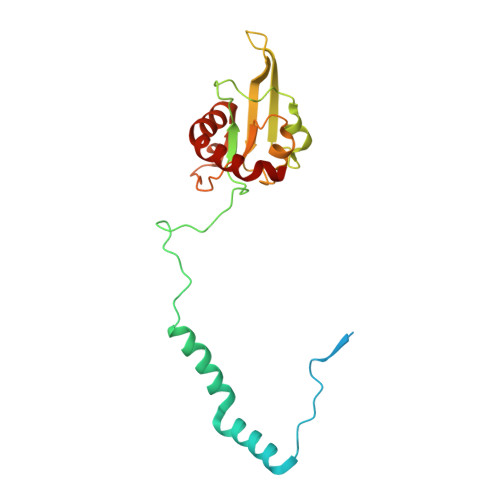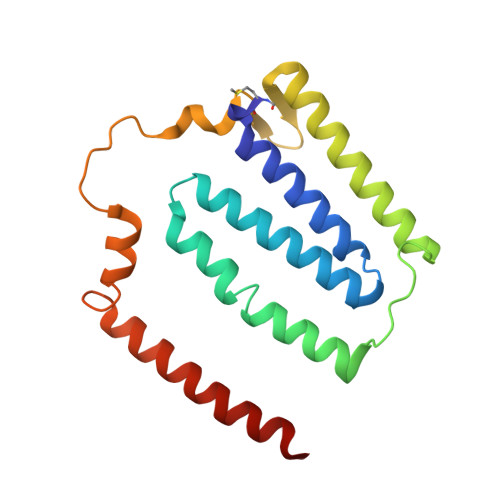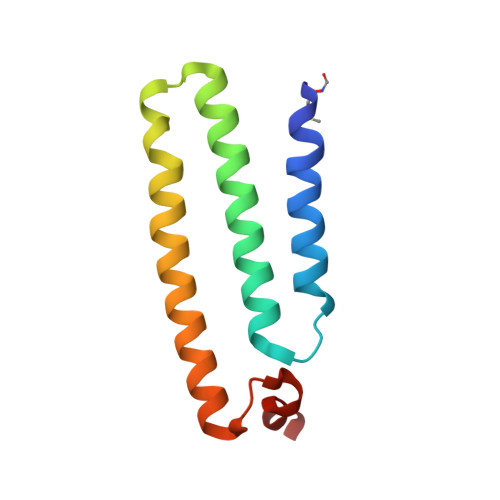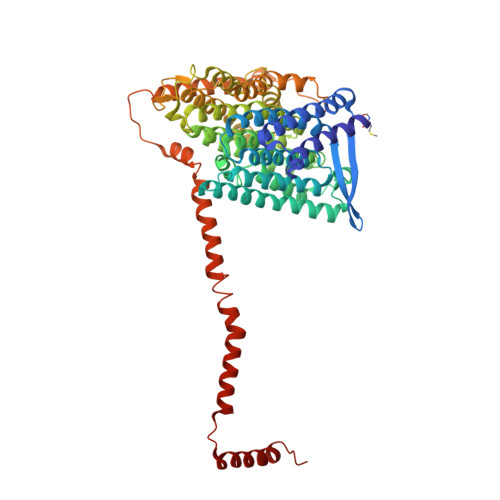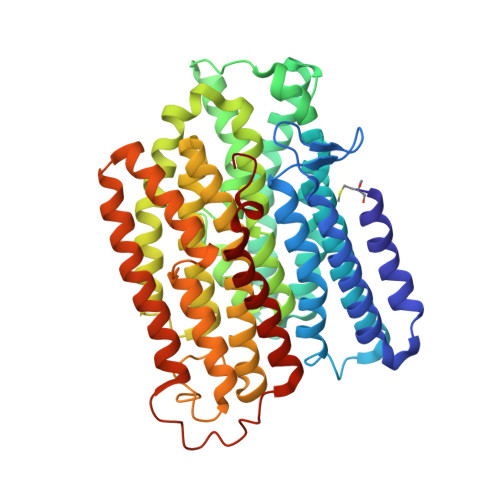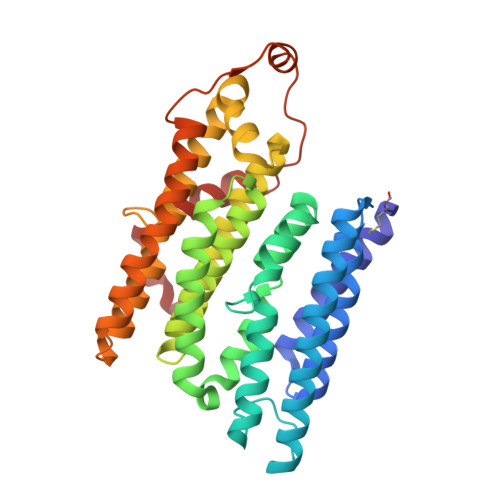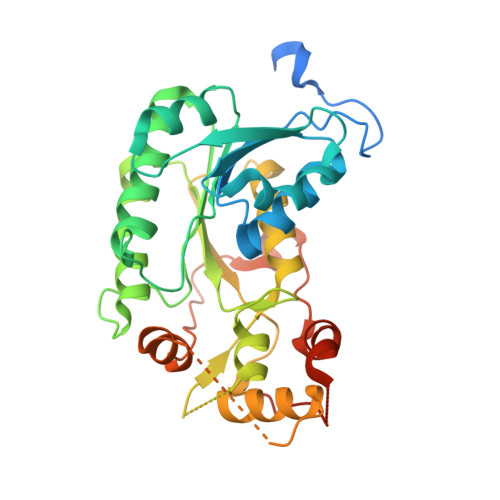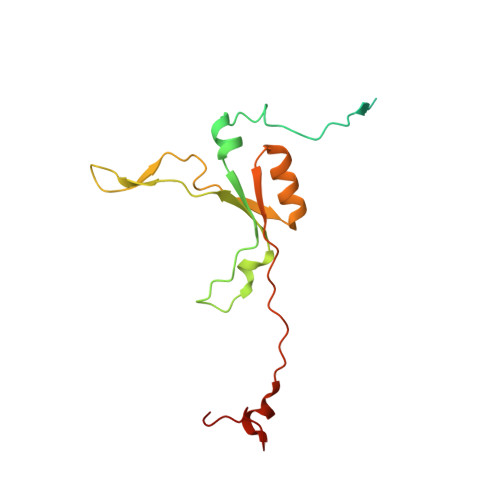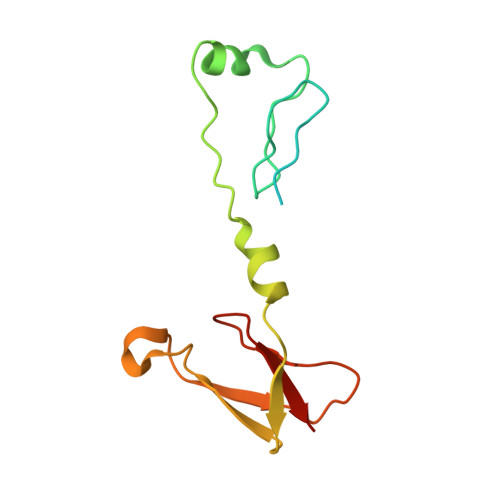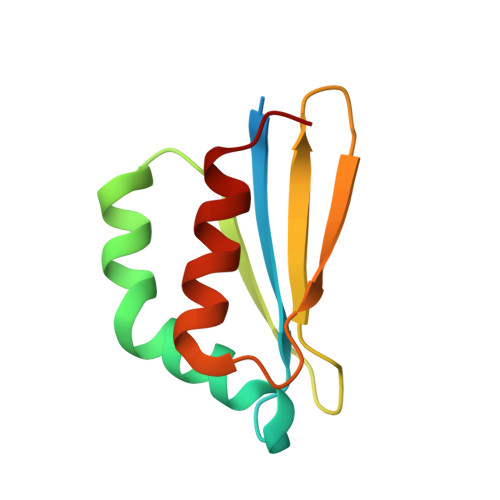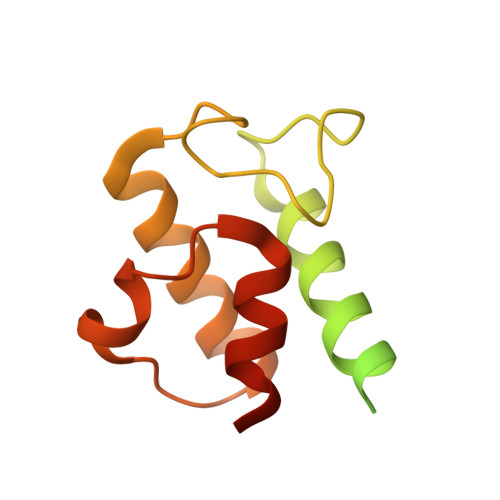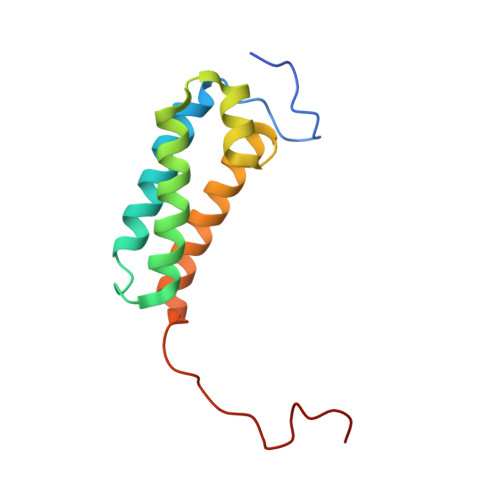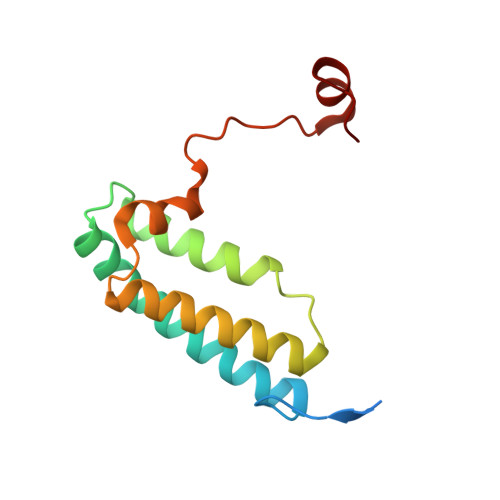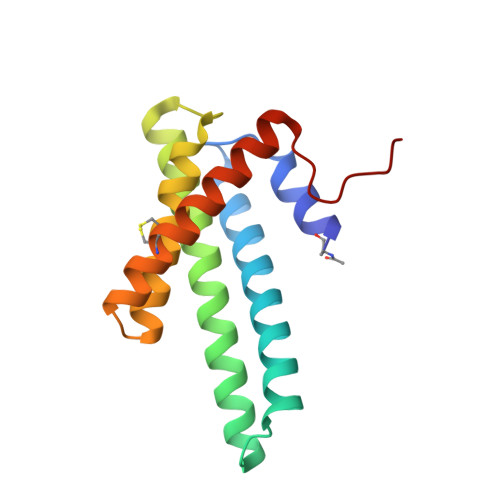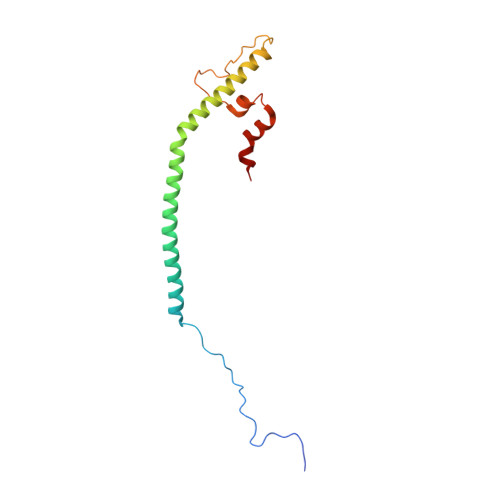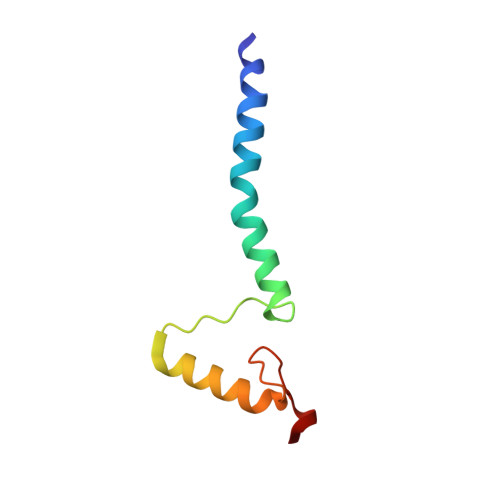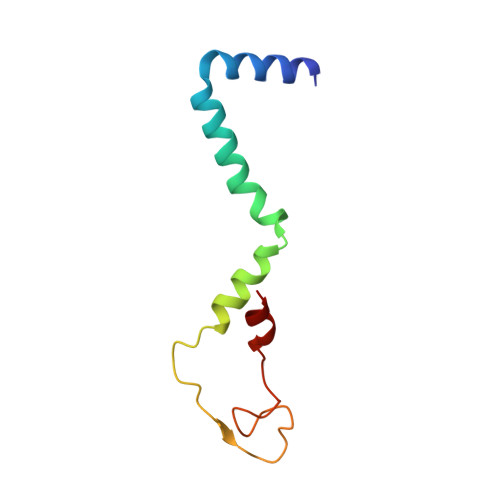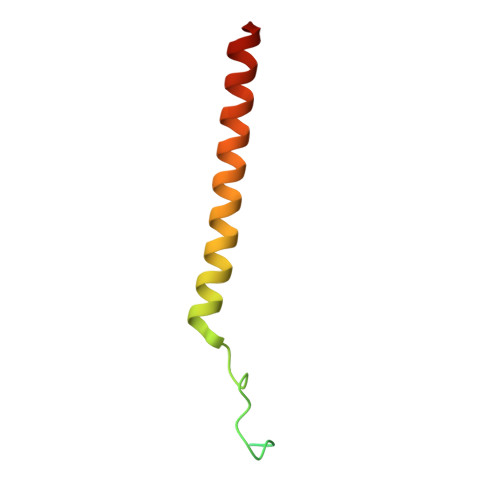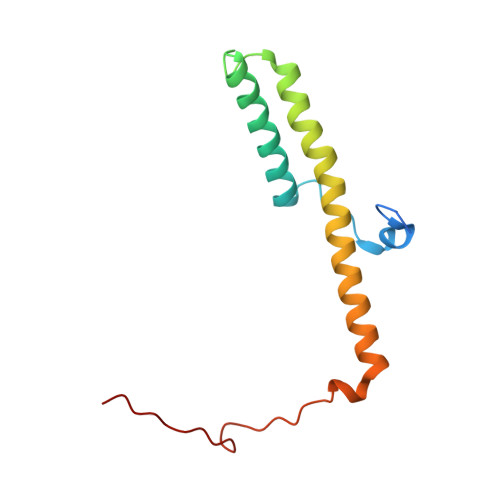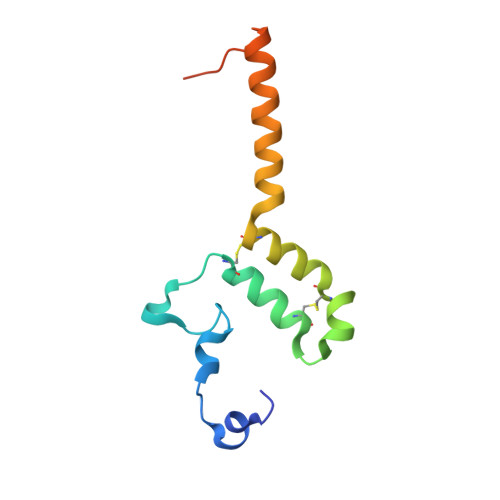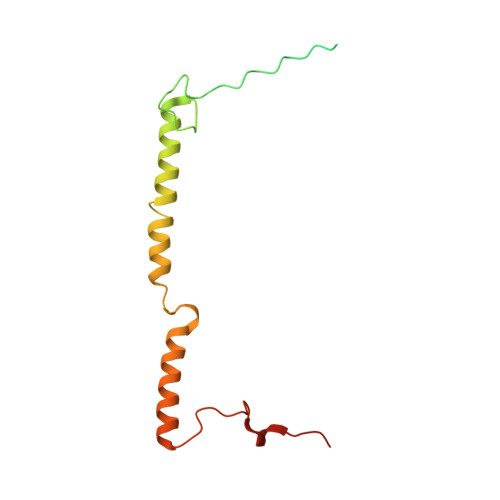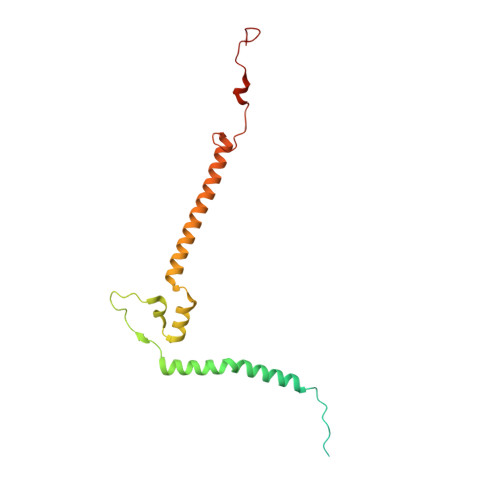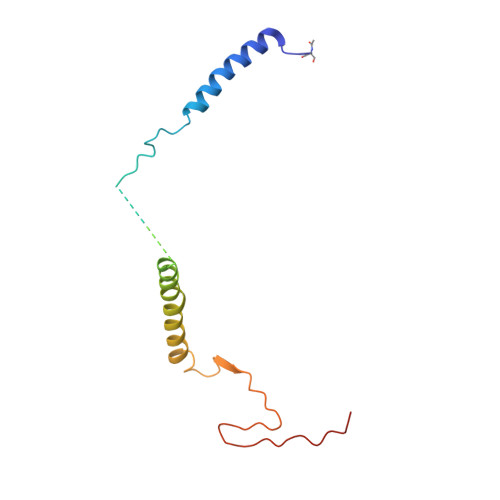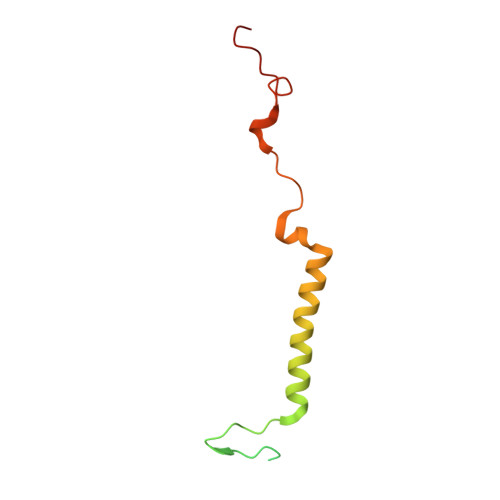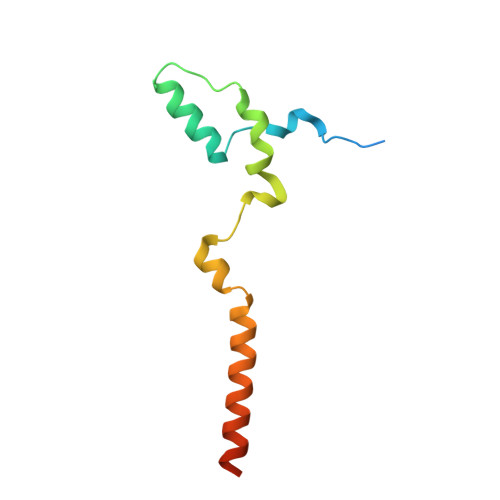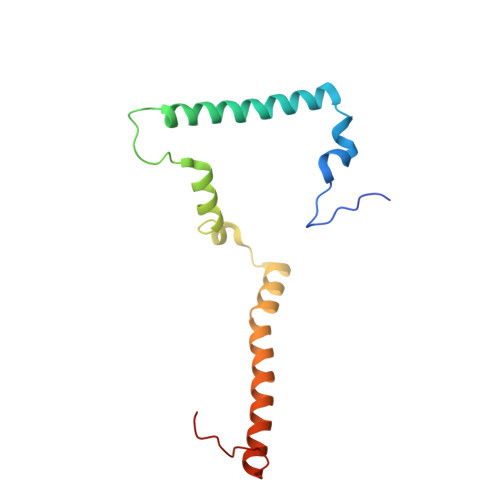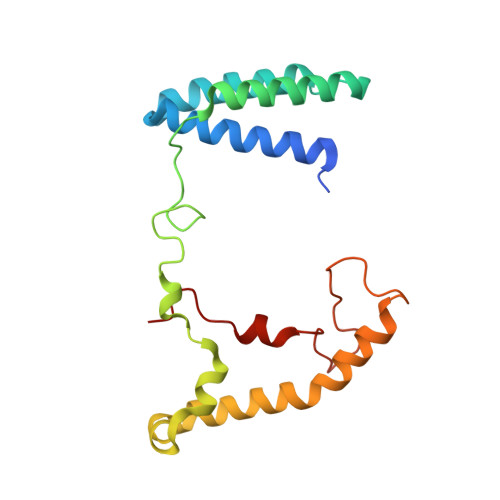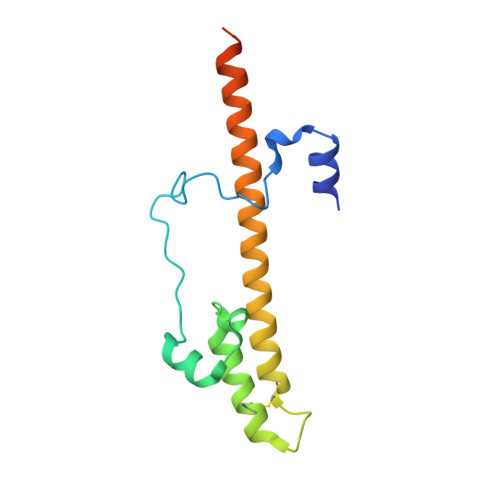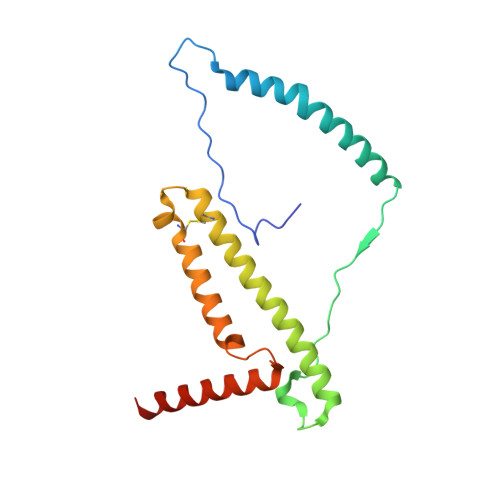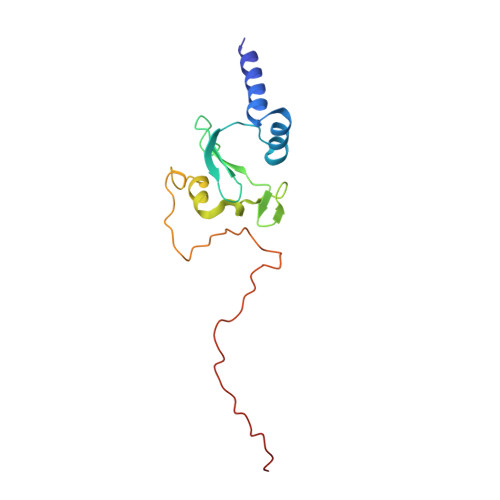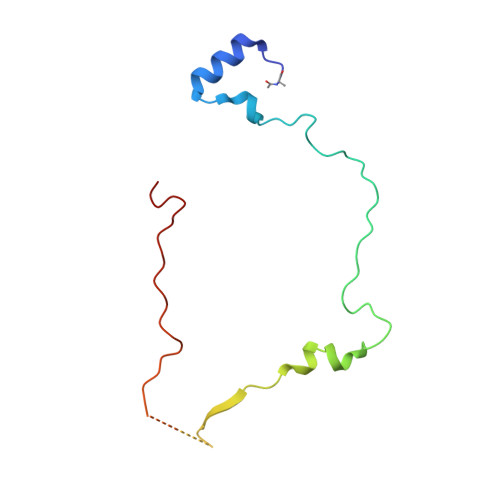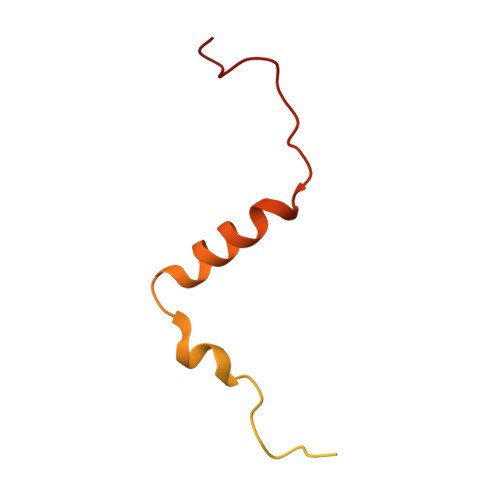Structural basis of mammalian respiratory complex I inhibition by medicinal biguanides.
Bridges, H.R., Blaza, J.N., Yin, Z., Chung, I., Pollak, M.N., Hirst, J.(2023) Science 379: 351-357
- PubMed: 36701435
- DOI: https://doi.org/10.1126/science.ade3332
- Primary Citation of Related Structures:
7QSD, 7R41, 7R42, 7R43, 7R44, 7R45, 7R46, 7R47, 7R48, 7R4C, 7R4D, 7R4F, 7R4G - PubMed Abstract:
The molecular mode of action of biguanides, including the drug metformin, which is widely used in the treatment of diabetes, is incompletely characterized. Here, we define the inhibitory drug-target interaction(s) of a model biguanide with mammalian respiratory complex I by combining cryo-electron microscopy and enzyme kinetics. We interpret these data to explain the selectivity of biguanide binding to different enzyme states. The primary inhibitory site is in an amphipathic region of the quinone-binding channel, and an additional binding site is in a pocket on the intermembrane-space side of the enzyme. An independent local chaotropic interaction, not previously described for any drug, displaces a portion of a key helix in the membrane domain. Our data provide a structural basis for biguanide action and enable the rational design of medicinal biguanides.
Organizational Affiliation:
MRC Mitochondrial Biology Unit, University of Cambridge, The Keith Peters Building, Cambridge Biomedical Campus, Cambridge CB2 0XY, UK.








